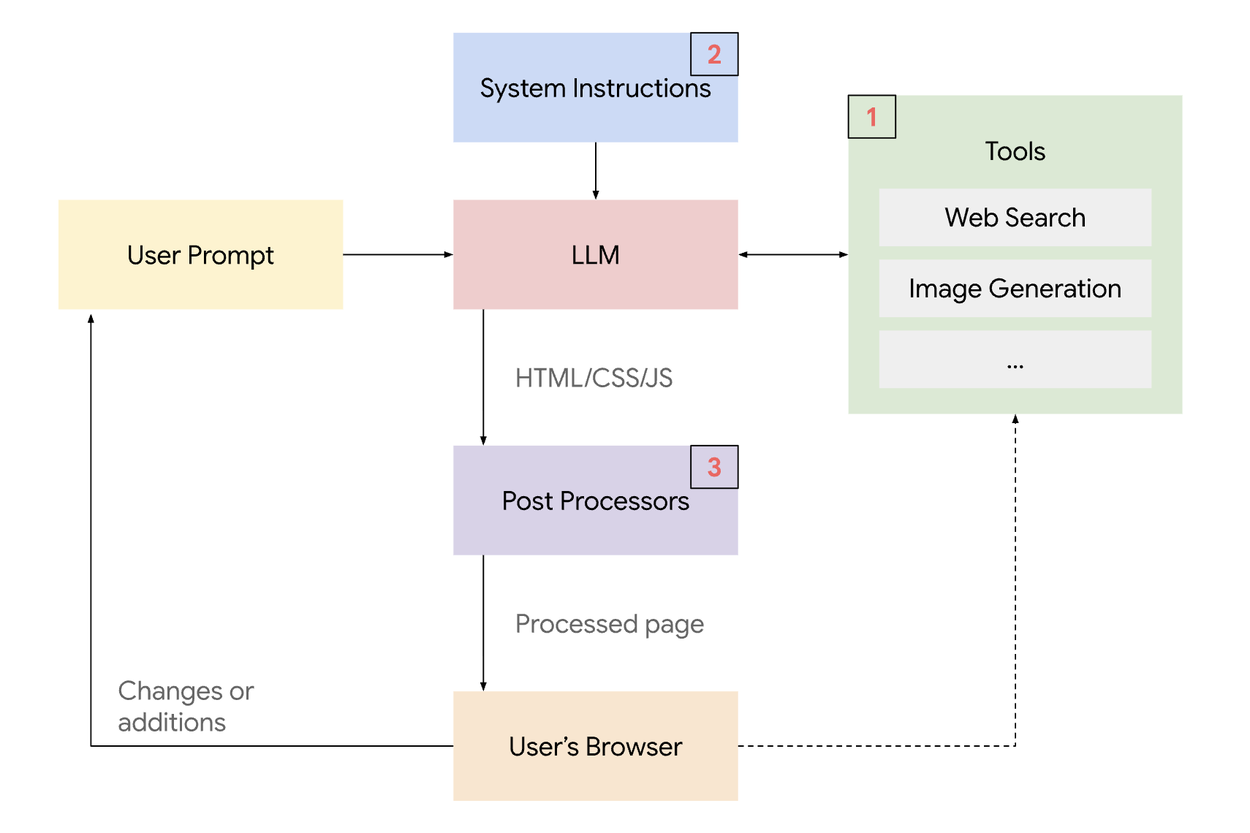What if every time you typed a prompt, you received not just an answer, but a personalized, interactive interface built just for you? Google’s breakthrough in
Checmakes this possible by allowing AI to create complete user interfaces on demand. Already integrated into the Gemini app and Google Search, this technology promises to reshape how we access and interact with digital information.
Moving Beyond Static AI Responses
Traditional AI responses are usually static, think plain text or simple layouts. Generative UI, however, leverages advanced language models to dynamically generate web pages, simulations, and tools that adapt directly to your request. Each interaction becomes immersive and uniquely tailored, far surpassing the rigid limits of standard templates.

A high level system overview. Image Credit: Google.
The Technology Behind Generative UI
At the heart of generative UI are three enhancements to Google’s Gemini 3 Pro model:
- Tool Access: AI can draw from services like image generation and web search, embedding these features directly in the interface for added depth.
- System Instructions: Detailed instructions ensure the AI follows interface goals, design principles, and technical best practices, minimizing errors and aligning outputs with user intent.
- Post-Processing: Special filters review and refine outputs, ensuring the final experience is polished and reliable.
This approach supports both seamless style consistency and extensive customization, giving users control over the look and feel of their interactions.

Left: Getting tailored fashion advice. Middle: Learning about fractals. Right: Teaching mathematics.
Real-World Use Cases and Innovations
Generative UI is already enhancing user experiences in two key platforms:
- Gemini App: Features like dynamic view and visual layout enable the app to generate interactive explanations, event planners, or tailored advice, making learning and productivity more engaging and hands-on.
- Google Search (AI Mode): U.S. subscribers to Google AI Pro and Ultra can access generative UI by choosing “Thinking” mode, which builds interactive simulations and visualizations that deepen understanding and streamline tasks.
Applications span educational tools, travel planners, galleries, and scientific demos, all delivered instantly and adapted to user needs.
Assessing User Satisfaction
To evaluate generative UI, Google developed the PAGEN dataset, featuring expert-designed websites. In studies, while human-crafted sites still led, users overwhelmingly preferred generative UI over basic text or markdown responses. This signals a clear demand for dynamic, visually engaging interfaces that improve satisfaction and usability.
Challenges and Future Directions
Although generative UI is still evolving, it paves the way for custom, interactive digital experiences for any scenario. Current research focuses on reducing wait times and boosting accuracy. Looking ahead, Google plans to expand generative UI by integrating more tools, harnessing user feedback, and further refining interface quality and personalization.
Key Takeaway
Generative UI represents a major step towards interactive, visually rich, and truly personalized AI experiences. As this technology advances, it is set to redefine our digital interactions—making each prompt the start of a unique, engaging journey.
Checkout the project page for more details and the paper https://generativeui.github.io/
Source: Google Research Blog

Generative UI Is Transforming the Way We Interact with AI